Jobs, mental health and family responsibilities: an extended administrative data study of occupations, mental health and mortality among the NI population and examination of the role of the COVID-19 pandemic
The proposed study is aligned with the ongoing ADR ‘OCCUMEN Study’ which examines the prevalence and correlates of mental disorders (MDs) across occupational categories. This related study will examine sex-specific temporal trends in mental disorders and causes of death across occupation types before and following the onset of the Covid-19 (C-19) pandemic and examine associations with family responsibilities.












